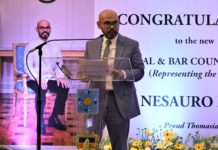DISASTROUS COVERAGES are not new for media practitioners, making the journalism field as one of the most dangerous professions in the world.
With the Philippines being declared by various media outlets as one of the “Most Dangerous Countries for Journalists,” Filipino media men and women are exposed to a dangerous environment, risking their lives to deliver quality and truthful news to fight for democracy. According to a private source from a media outfit, regular employees are entitled with hazard pay while contractual employees are not. How come this is possible when lives are at risk? How can we expect our media practitioners to be at their best and work double the effort all the time when a simple consideration like this is not properly compensated? Whether he or she is under a contract, permanent, freelance, or agency-hired, media outfits must be generous and practically human enough to their employees to provide one, especially in extraordinary or deadly measures.
With the ongoing pandemic and the recent verdict of Maria Ressa’s Cyber Libel case, we are all aware now that media practitioners are frontliners too, yet can still be a victim of the politicians’ evident law weaponization to attack the freedom of the press, which is one of the pressing reasons why journalists
In the pending Senate Bill 1860 or the Journalists’ Protection Act of 2018, it is stated that “Another problem faced by journalists is that, due to the inadequate compensation with no available benefits, they often do double jobs and work double time for their media company. They either become journalists who are also account and sales personnel, journalists who are newspaper circulators, or journalists who are also news anchors…”, However, there are journalists that stick to their craft, thinking that the duty a journalist in this time and age is to be one of the frontrunners on fighting fascism and dictatorship. “These poses harm to their physical well-being…
This measure, therefore, seeks to defend and uphold press freedom by promoting the safety and well-being of journalists, employees of media entities on field assignments and freelance journalists, employees of media entities on field assignments, and freelance journalists, in the form of disability, health, and hospitalization benefits.” She also suggested to the Social Security System (SSS) to have a special insurance program for freelance journalists, stating that 25% of their basic pay must be added in the duration of their deployment.
It is deeply discouraging for [them] to be expected of fair reportage yet receive unfair and unsecured labor treatments. In the recent Taal eruption, media practitioners flocked in the area, many of [them] were freelancers and did not receive hazard pay despite the number of days spent in the area, exposed to natural elements that are harmful to their health; as well as the night shift for the war on drugs coverages. Coverages like these can cause trauma and indeed put their lives at risk due to political agenda and unjustified killings.
Lucky are [those] who have the means to travel from one place to another for different coverages, spend for stories straight from their pockets, and have access to better healthcare in extraordinary times like these. However, not all is as privileged which is why the hazard pay must be pushed through to protect their physical and mental welfare.
Journalism is a profession for the brave, yet journalism remains a job for the privileged, due to different factors such as health, wealth, and family backgrounds that may cease careers due to monetary reasons. What more if they are not paid well and not receive hazard pay, the least? Does it always have to be like this?













